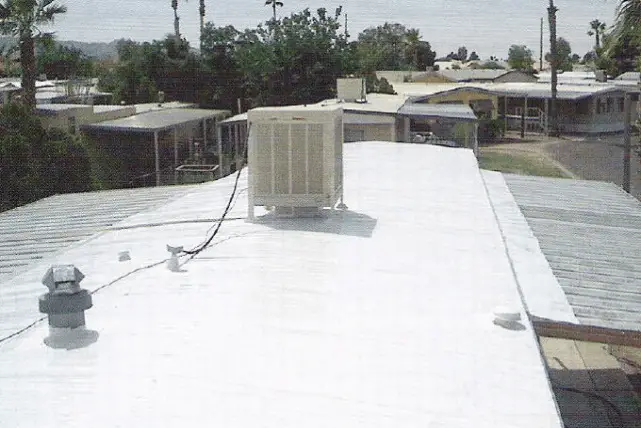 The Benefits Of Elastomeric Roof Coating
The Benefits Of Elastomeric Roof Coating
If you believe you'll be conserving the roofing decking plywood (not replacing it), then you might conserve yourself some clean-up problem by eliminating the components first and after that peeling up the rubber! Detail of water damage on camper roofing system. More water damaged areas on Recreational Vehicle roofing decking. There was absolutely nothing actually awful that made me feel like I was going to fail, but absolutely a lot of damage and I was getting the sensation I would be changing a great deal of the roofing system decking plywood.
 Kool Seal 10 Year Elastomeric Roof Coating
Kool Seal 10 Year Elastomeric Roof Coating
Find Out Here Now: roof maintenance - DC Roofing of Arizona https://www.liveinternet.ru/users/ebulteu9ar/post479455678/
I opted for the simplest one initially, a vent cap from a kitchen area sink pipes vent pipeline. Starting to scrape caulk and sealant. I utilized a stiff scraper with a chisel-like blade and just began spying and cracking and scraping and hacking. There is no other way around this, you just need to begin digging till you expose the screw heads.
Loosening the screws in vent cap. The screws on this vent cap were hex-head metal screws so I used a little socket chauffeur to remove them. Some came out tidy. Others were rusted and I had to use a vice-grip pliers to get the heads and turn them bit by bit.
I found an old wasp nest inside the vent cover. This is a sight I'll probably have actually to get utilized to, discovering the remains of animal habitation in every nook and cranny. I spend a dreadful lot of my time creating excellent wildlife habitat in my backyard so I don't get upset when an animal selects to set up home in my Recreational Vehicle.
Elastomeric Roof Repair Coatings, Elastomeric Roof Coatings
Fortunately nobody was home in this old nest so I simply tossed it. Maybe I'll put a screen over it when changing it. Which brings us to the next point. You ought to try not to damage these pieces (like vent covers and caps) as you're scraping off the old caulk and sealant simply in case you need to use them again.
(Think I'll learn when the roofing is done!) Prying up the vent cap and eliminating the last ring of rubber roofing beneath. So I pried up the rest of the cap and scraped up the staying rubber roofing and butyl tape and putty and 25 years of other gunk and here's how it looks tidied up.
 Pros And Cons Of Elastomeric Coatings
Pros And Cons Of Elastomeric Coatings
One down, 7 more fixtures to go. Next I chose to deal with the only roof ventilation fan that my camper has. My roof vent likewise had a vent cover over it. So I started scraping the gunk from those screws. Beginning on the roofing vent. Hardware exposed on roofing vent cap, the first nut came off clean.
 What Is A Roof Restoration?
What Is A Roof Restoration?
Bolt is spinning. The fasteners on this Recreational Vehicle roofing vent cover were nuts on small bolts. The first one came off great with an extension socket kit. The second one simply started spinning, meaning the bolt was not repaired in location however turning along with the nut. Disappointment. A peek at the hardware holding down the roof vent cover.
Spraying Elastomerics And Roof Coatings – A Complete Guide
I didn't have any great way to hold the bolt in place so instead I decided to saw through the bolts with a reciprocating saw. Sawing through bolts on roofing system vent cover. I utilized a cordless reciprocating saw with a metal-cutting blade however it was tricky to get the blade flat adequate to reach the bolts so near the roofing deck. A lot of were so old and rusted that they sheared off when I unscrewed then with a great deal of force. Unscrewing the brackets that held the vent cover in location. Then I scraped more caulk and roof sealant off the flange of the roofing system vent itself. I soon discovered there disappeared screws or hardware holding it down so I gave up on the scraping and went inside the RV After scraping the caulk and sealant from flange of roof vent, no more screws! Unscrewing the within cover plate of roofing vent fan in Recreational Vehicle restroom.
A couple sheared off with a lot of force, however two wouldn't budge. So I had to drill out the screw heads. I chose a drill bit close to the size of the shaft of the screws that I had actually currently pulled out and started drilling. Choosing a drill bit for drilling out a screw head.
Security glasses recommended. So I drilled out the heads, one popped off and the other I was getting frustrated with and offered it a yank prior to it was drilled through. Instead of popping off the screw head, the plastic just melted away around the hot screw head. Whoops. Hope I do not have to reuse this cover.
If not, I'll need larger screw heads when re-assembling. Cover plate gotten rid of from roof vent. Next I discovered little corner brackets with hex-head bolts holding them in. I unscrewed them (all came out fine the good news is) and pulled out the brackets and little white plastic spacers. Unscrewing corner brackets in roofing vent.
Pros And Cons Of Elastomeric Coatings
https://www.youtube.com/embed/EnV7zFKpPzU
All corner brackets got rid of, prepared to take out. When the brackets were out I went back up leading to pry out the the roofing vent. Then I scraped up all the staying gunk and rubber roof. Taking off the old roof vent. There are 2 wires going to the roof vent (a black hot wire and a white neutral wire) that you'll require to clip to remove the old vent.

 Log in with Facebook
Log in with Facebook 














